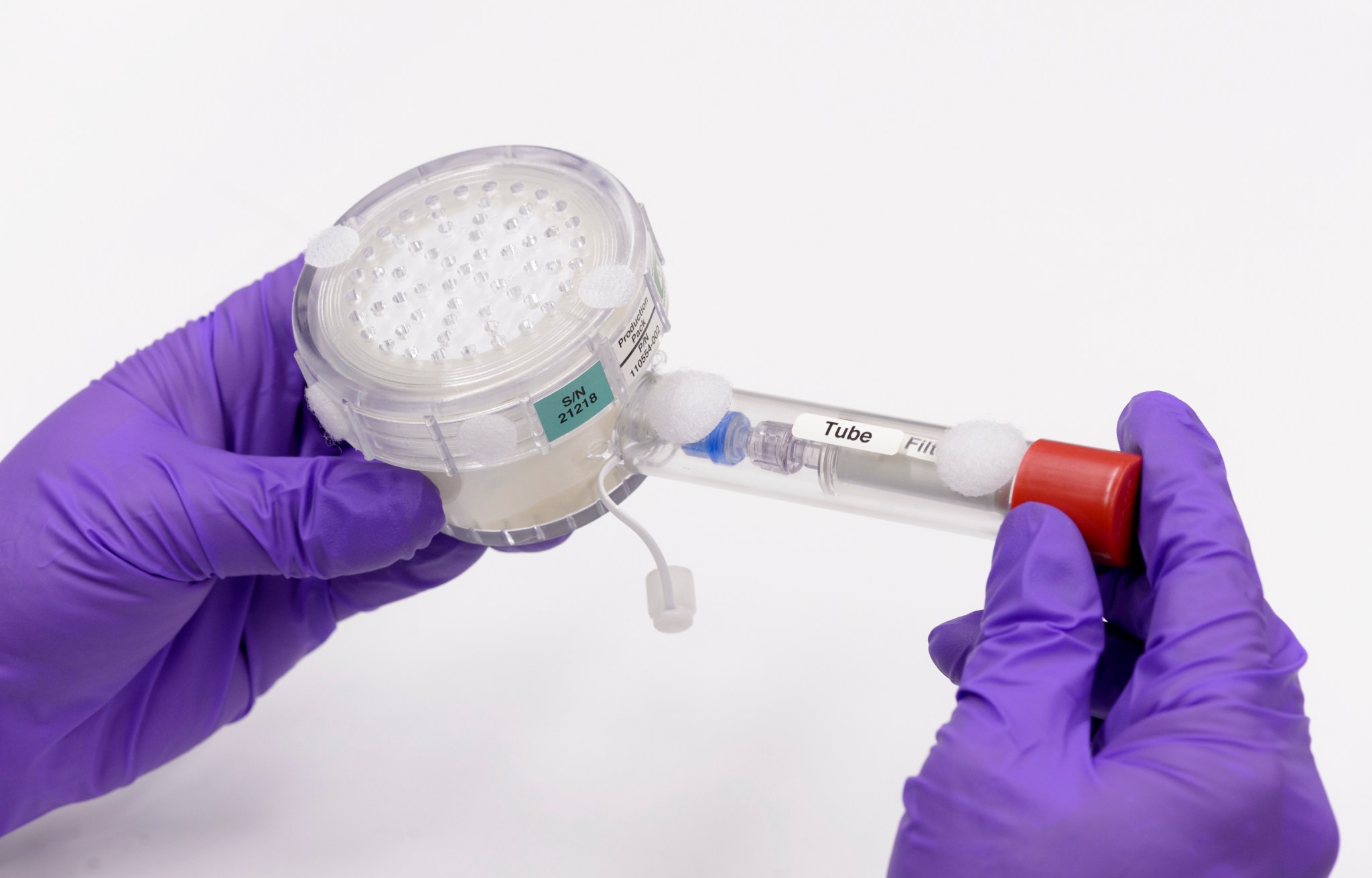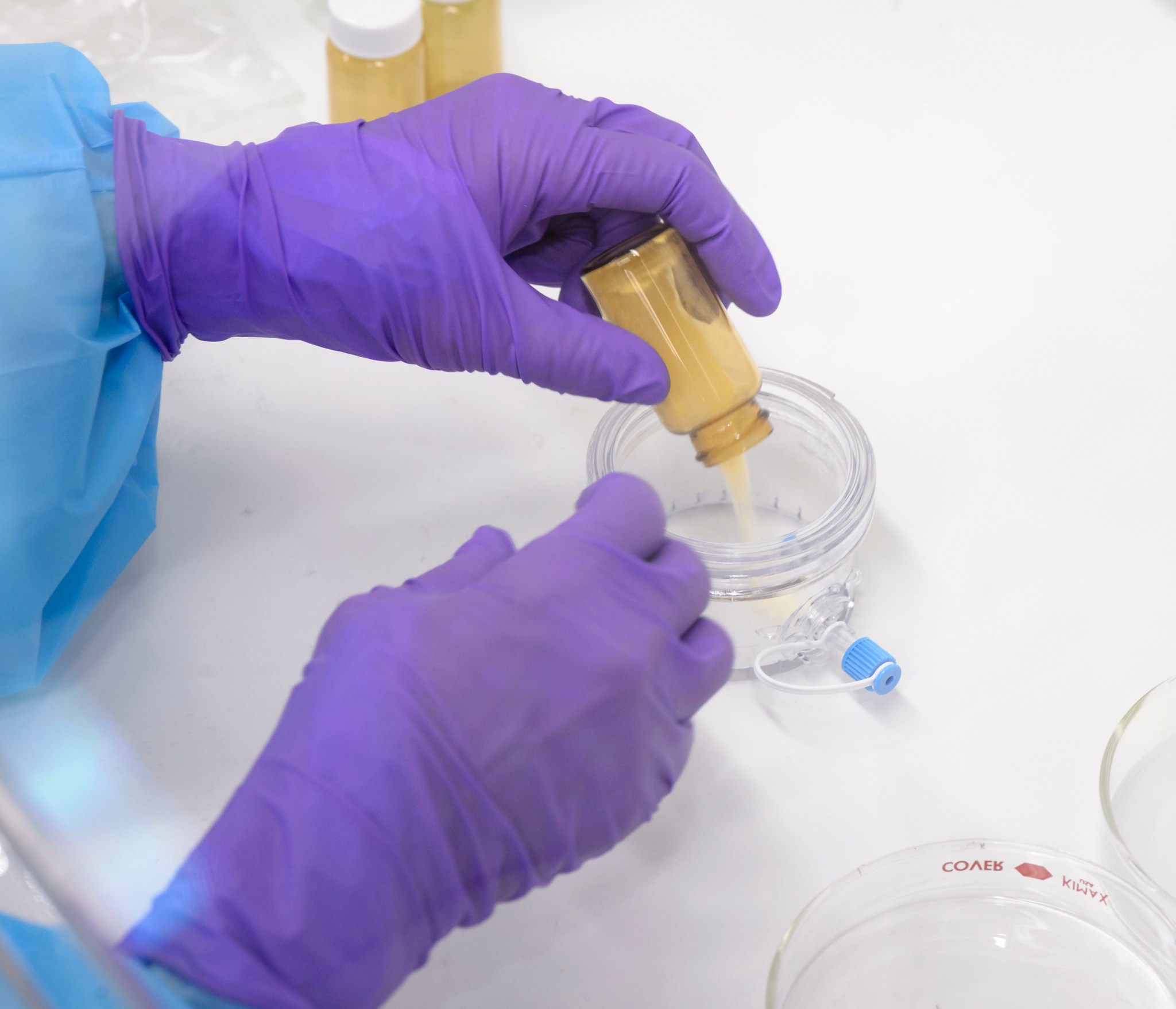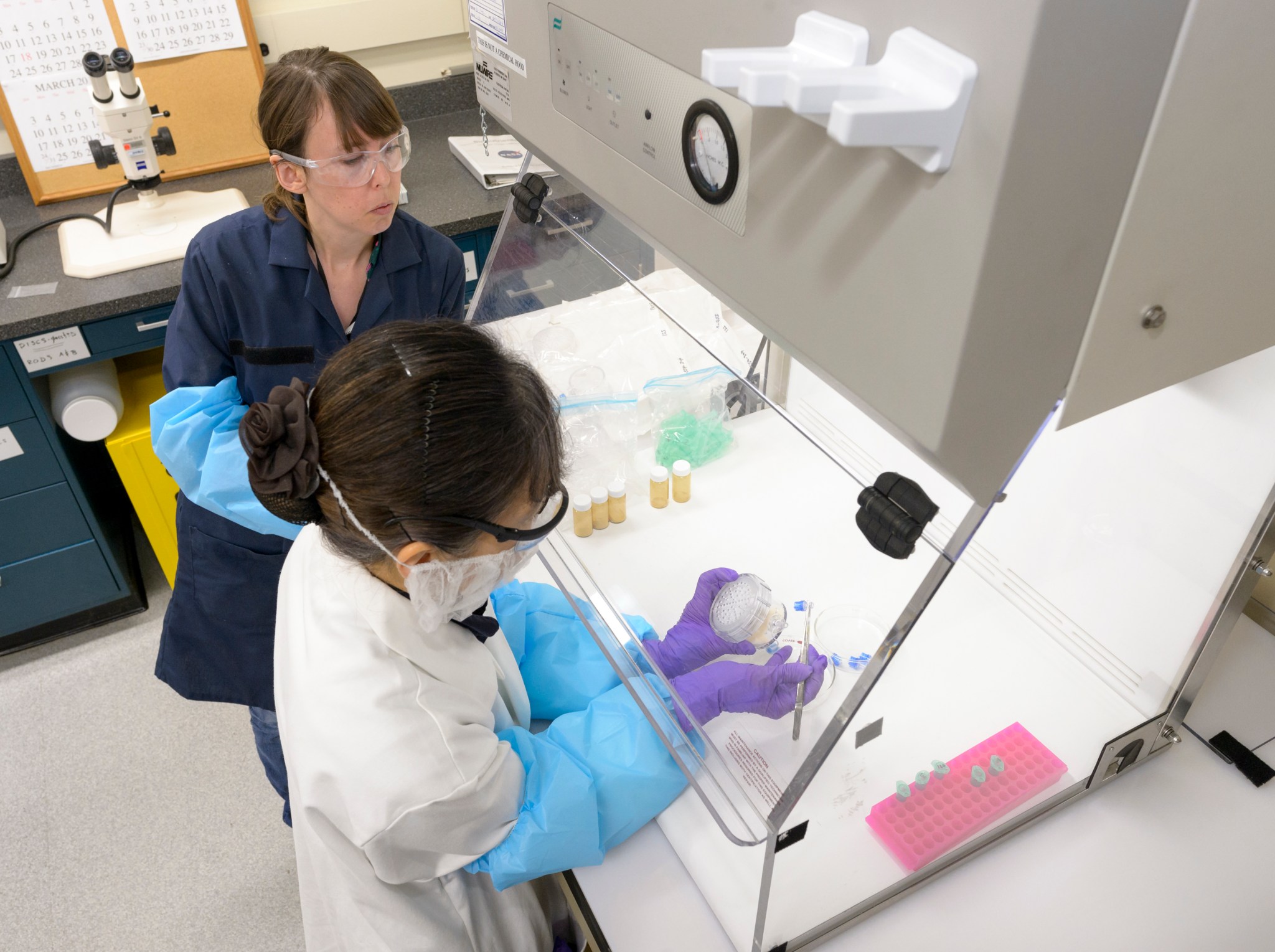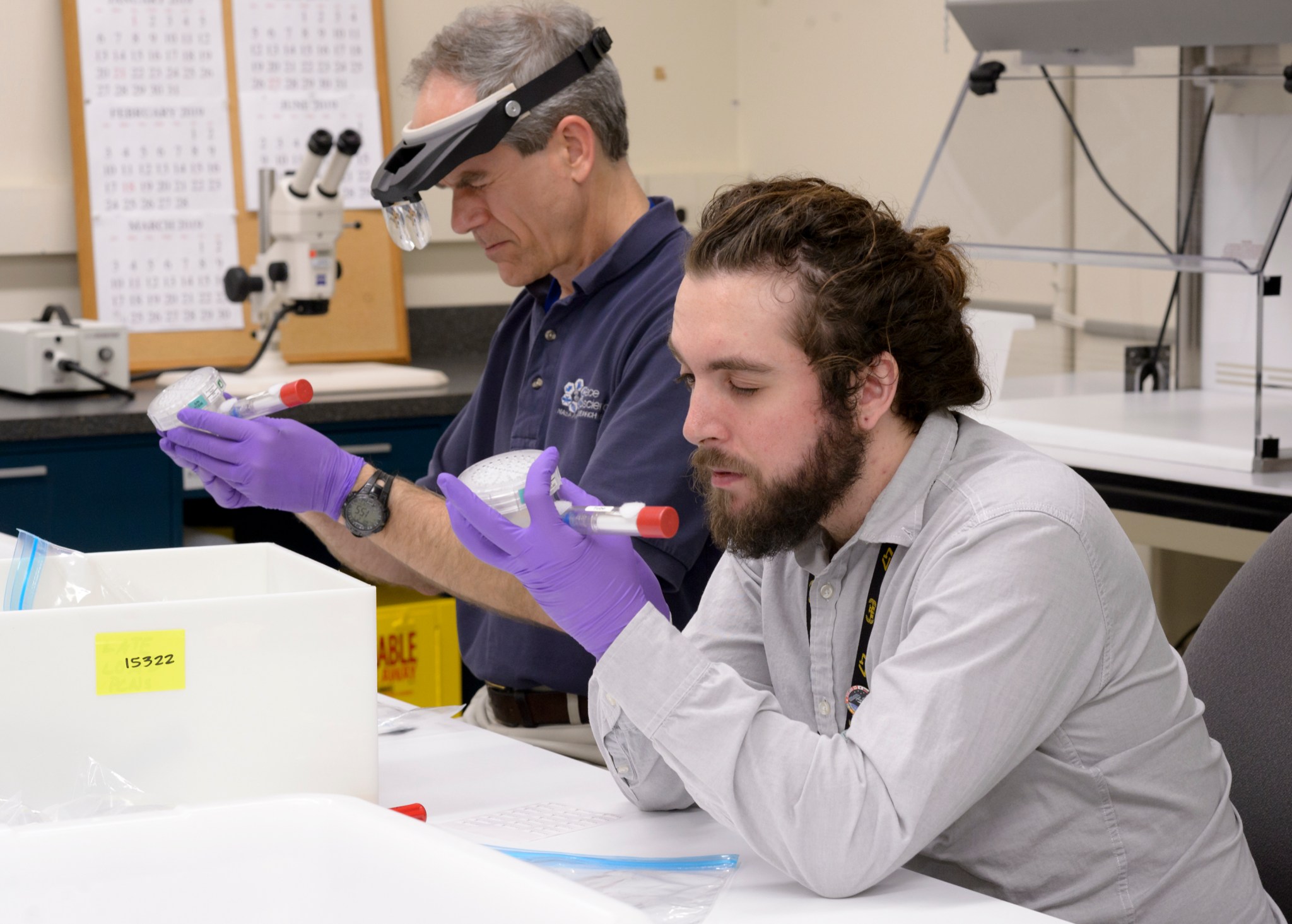A biology experiment called BioNutrients is testing a way to use microorganisms to produce nutrients – off Earth and on demand – that will be critical for human health in space.

Sailors might have avoided scurvy if NASA had been around in the age of exploration on the high seas. The condition is caused by a vitamin C deficiency, and many people died from spending months at sea without fresh fruits and vegetables. In the age of exploration into deep space, astronauts, too, will need a way to get the right nutrition. Planning ways to supply food for a multi-year mission on the Moon or Mars may require making food and nutrients in space. NASA scientists are testing an early version of a potential solution: get microorganisms to produce vital nutrients so that, whenever they’re needed, astronauts can drink them down. The same kind of system designed for space could also help provide nutrition for people in remote areas of our planet.
Microbial Nutrient Factories
With an experiment called BioNutrients, astronauts aboard the International Space Station will help test a new system over the course of five years. It was developed by scientists at NASA’s Ames Research Center, in California’s Silicon Valley, using this strategy: take a safe organism already present in our food (in this case, baker’s yeast), modify it so that it produces an essential nutrient, and build the right hardware to let astronauts grow the yeast in space. Like tiny living factories, the microorganisms will go about making the desired product. The nutrients that the yeast will produce in this experiment are called beta carotene and zeaxanthin. These are antioxidants usually found in vegetables, and they’re critical for keeping our eyes healthy.
Although astronauts on the space station will not consume anything for the BioNutrients experiment, they will conduct multiple rounds of tests on the system. For each test, they’ll add sterile water to a mixture of dehydrated yeast and its powdered food source, mix well and keep the packet warm for 48 hours. Then, they’ll freeze it to be analyzed later, back on Earth. NASA scientists will check how the system performed, including how much yeast grew in the packets and how much nutrient the experiment produced.

Essential (Nutrients) for Exploration
An on-demand nutrient production system like this will be vital for human exploration, because it may not be possible to provide complete nutrition from stored foods during a multi-year mission. What’s more, even with a supply of nutritional supplements, many nutrients have a limited shelf life. Some things, like vitamins, also just work better in their fresh form than in a processed tablet.
Space station crew members will perform tests on both yeast types periodically over the course of this initial experiment. This will allow scientists to check how long their specially engineered yeast stays good on the shelf and able to churn out fresh nutrients that humans will need to stay healthy in space.
The BioNutrients system will test two types of yeast with different “lifestyles” in the nutrient-production packets. One makes spores, a dormant form of the organism, as part of its lifecycle. The yeast should stay stable in this form for five years, giving it a reasonable expiration date for use during long-term missions on the Moon or to the surface of Mars. The other type does not make spores, and so may have a shorter shelf life. However, this type is interesting for other reasons. People are already eating this same yeast in probiotic supplements on the market today. And there are many more yeast species of this type available to scientists for potential use in future nutrient production systems, so understanding how they work could be important for the research.
As an additional part of the BioNutrients investigation, the researchers are studying the “shelf life” of other types of microbes — different from the two types of yeast tested in the production packets — to track how well the various organisms function during the five-year span in space, and what genetic features allow them to survive for the long haul. Samples of these specially prepared biomanufacturing and probiotic microorganisms are stored on the station and periodically returned to Earth for analysis.

BioNutrients-2
The BioNutrients-2 investigation launched to the space station aboard SpaceX’s CRS-26 mission on Nov. 26, 2022. This phase of the study builds on early results from BioNutrients-1 and incorporates several new features. The overall goal is to test an on-demand system to produce specific amounts of key nutrients using minimal equipment.
BioNutrients-2 broadens the types of microorganism being tested. It uses the same two yeast strains used in BioNutrients-1 and adds four new types. This includes two microorganisms that produce yogurt, one that produces a fermented milk product known as kefir, and another type of yeast specially prepared to produce follistatin, a protein linked to maintaining muscle mass.
The entire range of microorganism types will be tested in a BioNutrients-2’s new hardware. The system uses lightweight, flexible bags – a form factor comparable to existing crew food products – rather than the rigid containers being tested for BioNutrients-1. This change reduces the mass and the volume of the system, offering advantages for long duration spaceflight when volume and mass are limited.
Two experiment runs are planned for each sample type: the first at approximately 30-60 days after launch, and the second at about six months. Each run involves a crew member retrieving four bags of a given sample type, adding water, and agitating the bags to mix the contents. The crew will place the bags in an incubator to promote growth. At the end of the run, the crew will remove the bags from the incubator and freeze them. The bags will be returned to Earth, still frozen, for analysis.

Making Molecules and Medicines in Remote Places
This technology NASA is developing for future astronauts could also be used by people living in remote areas on Earth today. Results from the study will tell NASA scientists a lot about how to produce other molecules that will be critical for human health in space, including medicines for treating various ailments. Promising research is under way now to use microbes in a range of space applications. By developing microorganisms that can withstand long periods of inactivity and be revived successfully, BioNutrients is also taking steps toward making that future a reality.
Milestones:
- April 2019 – The BioNutrients-1 experiment launched to the space station aboard NASA’s Northrop Grumman 11th commercial resupply services (CRS-11) mission
- June 2019 – BioNutrients-1 samples returned to Earth aboard NASA’s SpaceX CRS-17 mission.
- June 2019 – The first experiment run of BioNutrients-1 packs in space was completed by Canadian Space Agency astronaut David Saint-Jacques.
- August 2019 – BioNutrients-1 samples returned to Earth aboard NASA’s SpaceX CRS-18 mission.
- January 2020 – BioNutrients-1 samples returned to Earth aboard NASA’s SpaceX CRS-19 mission.
- January 2020 – The second experiment run of BioNutrients-1 packs in space was completed by NASA astronaut Andrew Morgan.
- April 2020 – BioNutrients-1 samples returned to Earth aboard NASA’s SpaceX CRS-20 mission.
- January 2021 – BioNutrients-1 samples returned to Earth aboard NASA’s SpaceX CRS-21 mission.
- January 2021 – The third experiment run of BioNutrients-1 packs in space was completed by NASA astronaut Shannon Walker.
- July 2021 – BioNutrients-1 samples returned to Earth aboard NASA’s SpaceX CRS-22 mission.
- January 2022 – BioNutrients-1 samples returned to Earth aboard NASA’s SpaceX CRS-24 mission.
- February 2022 – The fourth experiment run of BioNutrients-1 packs in space was completed by NASA astronaut Thomas Marshburn.
- August 2022 – BioNutrients-1 samples returned to Earth aboard NASA’s SpaceX CRS-25 mission.
- November 2022 – The BioNutrients-2 experiment launched to the station aboard NASA’s SpaceX CRS-26 mission.
- January 2023 – The first experiment run of BioNutrients-2’s was completed by NASA astronauts Nicole Mann, Josh Cassada, and Frank Rubio
- January 2023 – BioNutrients-1 and BioNutrients-2 samples returned to Earth aboard NASA’s SpaceX CRS-26 mission.
- January 2023 – The fifth experiment run of BioNutrients-1 packs in space was completed by JAXA astronaut Koichi Wakata.
- March 2023 – BioNutrients-1 samples returned to Earth aboard NASA’s SpaceX Crew-5 mission.
- April 2023 – BioNutrients-2 samples returned to Earth aboard NASA’s SpaceX CRS-27 mission.
- May 2023 – The second experiment run of BioNutrients-2 was completed by NASA astronaut Warren Hoburg and UAE astronaut Sultan Alneyadi
- June 2023 – BioNutrients-1 and BioNutrients-2 samples returned to Earth aboard NASA’s SpaceX CRS-28 mission.
- December 2023 – BioNutrients-1 samples returned to Earth aboard NASA’s SpaceX CRS-29 mission.
- January 2024 – The sixth experiment run of BioNutrients-1 packs in space was completed by JAXA astronaut Satoshi Furukawa.
- February 2025 – The seventh experiment run of BioNutrients-1 packs in space was completed by NASA astronaut Suni Williams.
Partners:
BioNutrients was developed by NASA Ames. The Game Changing Development program within NASA’s Space Technology Mission Directorate manages the project, which is part of a larger synthetic biology portfolio. Additional support is provided by Exploration Systems Development Mission Directorate as part of Exploration Capabilities. The project was previously funded by NASA’s Advanced Exploration Systems program within the Human Exploration Operations Mission Directorate.
Learn more:
- NASA Continues BioNutrients Space-Fermented Food Research (NASA featured image, March 2025)
- BioNutrients: A Five-Year Experiment in Space Nears Completion (NASA story, January 2024)
- Astronaut Josh Cassada works on the BioNutrients-2 investigation (NASA featured image, January 2023)
- Astronaut Nicole Mann works on the BioNutrients-2 investigation (NASA featured image, January 2023)
- Cutting-edge Experiments Ride SpaceX’s 26th CRS Mission to Space Station (NASA story, November 2022)
- A Fresh Take: NASA BioNutrients for Future Artemis Missions (NASA featured image, March 2022)
- A Space Traveler’s Recipe for Sweet Potato Pie? (NASA featured image, November 2019)
For researchers:
- BioNutrients-1 – Technical experiment page, NASA Ames Space Biosciences division
- BioNutrients-1 – International Space Station technical mission page
- BioNutrients-2 – International Space Station technical mission page
- BioNutrients-3 – International Space Station technical mission page
For news media:
Members of the news media interested in covering this topic should reach out to the NASA Ames newsroom.




























